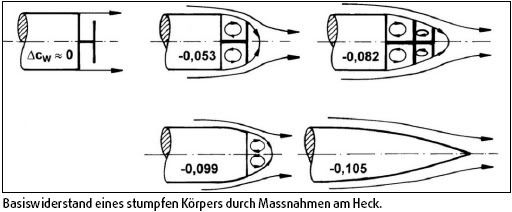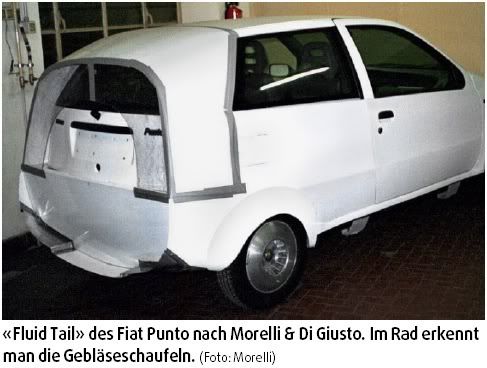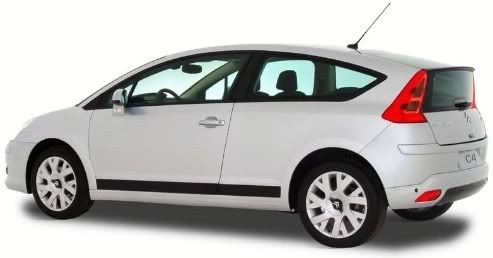The Swiss car magazine „Automobil Revue“ had an article on aerodynamics:
http://media.automobilrevue.ch/files...widerstand.pdf (pdf, 1.6 MB)
One reason why there’s been stagnation in aerodynamic progress in recent years is that the standard European drving cycle for reporting fuel economy, NEDC (see e.g.
http://en.wikipedia.org/wiki/New_European_Driving_Cycle), has an unrealistically low average speed of 33 km/h, so there’s not much incentive for manufacturers to optimize the drag coefficient. Unlike the US EPA tests, NEDC is an artificial cycle not based on actual driving data. As a rule of thumb, on the NEDC every 10% reduction in aerodynamic drag results in 2.5% reduction in fuel consumption. In the real world, the improvement should be more dramatic.
A summary of aerodynamic improvements, expressed as change in drag coefficient, delta Cd (here a semicolon-delimited list), theoretically possible vs. actually realizable:
Measure;Theoretical;Actual
Rear;-0.100;-0.060
Smooth underbody;-0.030;-0.015
Rear diffusor;-0.025;-0.025
Wheels;-0.025;-0.020
Radiator;-0.020;-0.020
A-pillars & mirrors;-0.010;-0.010
Total;-0.210;-0.150
So if you were to max out, say, a VW Golf V, the drag coefficient would drop to (0.32 – 0.15) = 0.17; a 47% reduction!
Here’s a comparison of drag coefficient improvements with various changes to the blunt rear end of a cylindrical body:

The article’s text doesn’t specify, but here’s my take on this drawing: the T-shaped thing is a disk. When mounted too close to the end it has no effect, but placed farther back it improves the Cd by -0.053. Adding yet another, smaller disk farther back further improves the Cd by –0.082. A medium-length Kammback brings –0.099, while a full-length tapered tail (L/D ca. 3) brings –0.105.
In 1999 Morelli & Di Giusto modified a Fiat Punto, adding a Kammback and blower-type rear wheels, calling it the Fluid Tail:

Images of MetroMPG, Basjoos and others come to mind. The duct tape is familiar to all of us. Note that their Kammback has a clear plastic partial end cap. Don’t ask me how they opened the hatch, though.
The rear wheel rims were designed as radial blower fans, pumping air into the area behind the wheel, acting as a sort of air-pillow wheel fairing, as I understand it. Note also the Audi A2-like wheel well bulge (what for?).
Here’s their patent text:
http://www.freepatentsonline.com/EP0937633.html .
More tail modifications:

Compared to the standard blunt end (a), adding what they call attikas (fascias or parapets; flat, parallel panels) (b) delays separation and moves the tail vortices back (reduces Cd by up to 10%); these can be set inward (c), further reducing the size of the „dead zone“ (reduces Cd by 0.06, which is about half as good as the ideal tapered tail); the open-ended Kammback made of flat panels (d); and „Fluid Tail" (e).
The French automaker Citroen seems to be dedicated to aerodynamics. The models C1, C2, and C3 either have a body-color above-bumper grill block or no above-bumper grill at all. And the C4 has some serious Kammback action (in person the look is even more dramatic):
